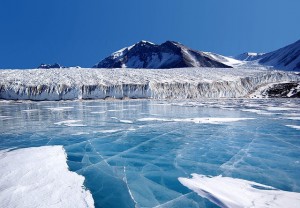 What happens when a gaping hole opens up in a massive body of ice? Scientists use it as a learning opportunity, of course.
What happens when a gaping hole opens up in a massive body of ice? Scientists use it as a learning opportunity, of course.
This is what recently occurred in Antarctica. The appearance of a hole, known as a polynya, has caught the attention of researchers, but not only because of its size (approximately equivalent to the state of Maryland).
Forty years ago, satellite images originally discovered a gap in the ice near the Weddell Sea off the Antarctic Peninsula. It eventually disappeared, but it has mysteriously returned, prompting scientists to ask why. Many believe that changes in climate could be to blame for the polynya – but what is a polynya?
What is a Polynya?
“Polynya” is actually the Russian word used to describe an open body of water surrounded by ice (“What Is A Polynya? What Is The Ecological Significance Of A Polynya?,” 2017). They typically vary in size, and they can be found in both the Arctic and Antarctic areas of the globe.
Polynyas are known to form and disappear, repeating the process over time. They occur when strong winds blow off of the land and into the sea, pushing away patches of ice from the coast. Many polynyas form in the same areas every year. For example, there are some that develop between Canada and Greenland annually. However, others are one-time occurrences – or so they seem to be. This is why the reemergence of the Weddell polynya has researchers scratching their heads.
The Weddell Polynya
Although it hasn’t been spotted for more than 40 years, most scientists are in agreement that the Weddell polynya formed as a result of natural climate processes.
“The Southern Ocean is strongly stratified,” Dr. Mojib Latif, head of the Research Division at GEOMAR, told Newsweek (Lowe, 2017). “A very cold but relatively fresh water layer covers a much warmer and saltier water mass, thus acting as an insulating layer. Sometimes, the layer of warm water can then melt the ice. This is like opening a pressure relief valve—the ocean then releases a surplus of heat to the atmosphere for several consecutive winters until the heat reservoir is exhausted.”
So how will the Weddell polynya help today’s researchers? As Latif explains, its formation will give scientists an opportunity to look closely at how the climate impacts these natural processes.
“The better we understand these natural processes, the better we can identify the anthropogenic impact on the climate system,” he concludes.
